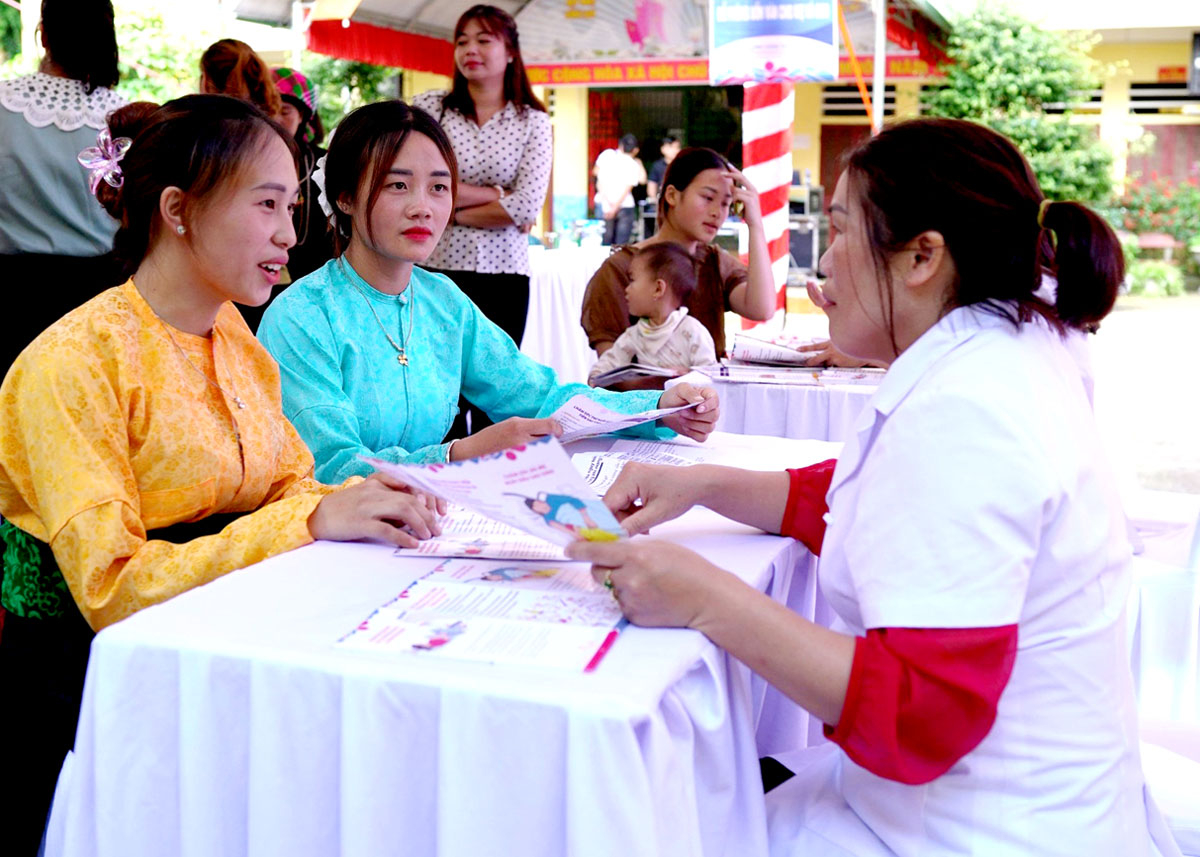Efforts to end HIV/AIDS epidemic
BHG - In alignment with the National Strategy to end the AIDS epidemic by 2030, Ha Giang Province has implemented various comprehensive measures, yielding initial positive outcomes. Since the first HIV case was reported in October 1998, the province has recorded a cumulative total of 1,771 HIV cases by the end of 2024, with 731 individuals currently under management. The epidemic shows a tendency to spread among the younger population (ages 20–39) and in remote areas.
 |
| Healthcare worker educating women of reproductive age about HIV prevention in Sung La Commune, Dong Van District. |
The provincial authorities have developed and executed HIV/AIDS prevention and control programmes, directing all levels and sectors to implement appropriate solutions tailored to local realities. Support is provided to individuals living with HIV concerning education, daily life, employment, and participation in community care activities.
The intervention network covers all 11 districts and a city, encompassing 193 communes, wards, and towns. The province maintains 11 HIV/AIDS treatment facilities, 29 counselling and testing rooms, and five methadone treatment centres. Annually, over 36,000 HIV test samples are conducted. Programmes distributing free condoms and syringes, along with counselling for high-risk groups, have also been expanded.
In terms of treatment, 98.6% of patients have achieved HIV viral load suppression, ensuring effective therapy and 100% of patients co-infected with HIV and tuberculosis receive concurrent treatment. Communication efforts have been intensified through various channels, with thousands of sessions targeting high-risk groups and adolescents, engaging over 11,000 individuals directly. The movement “All people participate in HIV/AIDS prevention and control in the community” has been comprehensively implemented, mobilising grassroots core forces. More than 80% of households, agencies, businesses, and schools have signed commitments to prevent HIV/AIDS.
However, challenges remain: a portion of the population still lacks awareness, leading to stigma; pre-exposure prophylaxis has not yet been implemented; and funding at the grassroots level is insufficient. To achieve the goal of ending HIV/AIDS by 2030, it is essential to enhance communication, expand preventive treatment, increase testing among high-risk groups, mobilise private and social healthcare sectors, ensure sustainable financing, improve service quality, and apply technology in patient management. This collective effort aims to build a humane, equitable society free from the burden of HIV/AIDS.
AN GIANG





READER COMMENTS